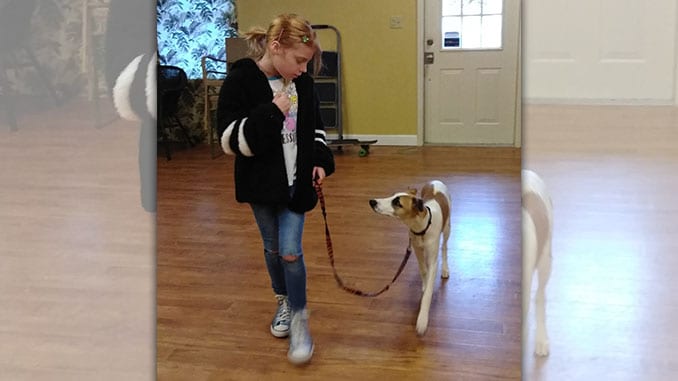
Statistically speaking, half of children under age 12 are bitten by a dog, with the majority of bites occurring between ages 5-9.
Published: July 31, 2019
By: Rebecca Mason, CPDT-KA, CTDI, M.Ed.
“Kids should grow up with dogs.”
I hear this all the time, including recently at a drive-thru when the cashier saw my business sign on my car. He said, “Oh, you’re a dog trainer! I want to get a dog for my daughter, so she can grow up with it and it will listen to her.”
“How old is she?” I asked the cashier. “Three,” he said. I should have probably answered more tactfully, but instead, “No, no, no!” came out of my mouth.
Why? Statistically speaking, half of children under age 12 are bitten by a dog, with the majority of bites occurring between ages 5-9, usually to the face. So, when parents ask me how old their child should be before they get a dog, my response is at least nine years old! (Mind you, an 11-year-old can be bitten too!)
It comes down to knowing your child’s developmental age. Toddlers tend to grab dogs by the fur and not let go, climb on them, and try to hug them (which most dogs find threatening). They are too young to manage their own impulses at that age. This is a recipe for disaster, which is what I explained to the father at the drive-thru.
As far as elementary-age children go, kids this age can struggle to physically handle a dog, and I can tell you from experience, these kids LONG to be a part of their dog’s training. This is not to say that a child age 7 or 8 can’t participate; it’s just physically harder for them, partly because they are small and can easily be pulled down by a dog, and partly because of timing and motor ability. They have softer speaking voices than adults, whereas we can project our voices in a way that the dog hears more clearly. This frustrates children and can lead to hurt feelings when “their” dog listens better to their parents or big sister than to them.
If you have a child under 9 years old and you already have a dog, that doesn’t mean you should throw in the towel. Supervise all interactions between your child and your dog, and make sure they get breaks from one another so your dog doesn’t become overwhelmed. More importantly, educate yourself and your kids on canine body language so you will know the warning signs that your dog is uncomfortable. There are some great resources for parents and kids at doggonesafe.com or gooddoginabox.com. Also enroll your dog in obedience classes where the trainer teaches YOU – not just your dog!
If you don’t yet have a dog but would like one, wait until your kids are in fourth or fifth grade, then decide as a family which dog to get. Don’t buy a dog because of looks and don’t just look at puppies! Older dogs make wonderful pets – and you usually get to skip the potty training and nipping phases. Speak with shelter workers about the dogs at your local shelter or check out rescue dogs in foster homes. The foster parents will give you a wealth of information about the dog.
If getting a puppy, watch the pup’s interactions with its siblings. Is she one of the rowdiest pups, or is she more calm? Meet the pup’s parents if you can in order to gauge size, disposition, and health. Lastly, research different breeds and their personality traits, keeping in mind that there is no such thing as a perfect dog – just the perfect dog for you, at the right time.
